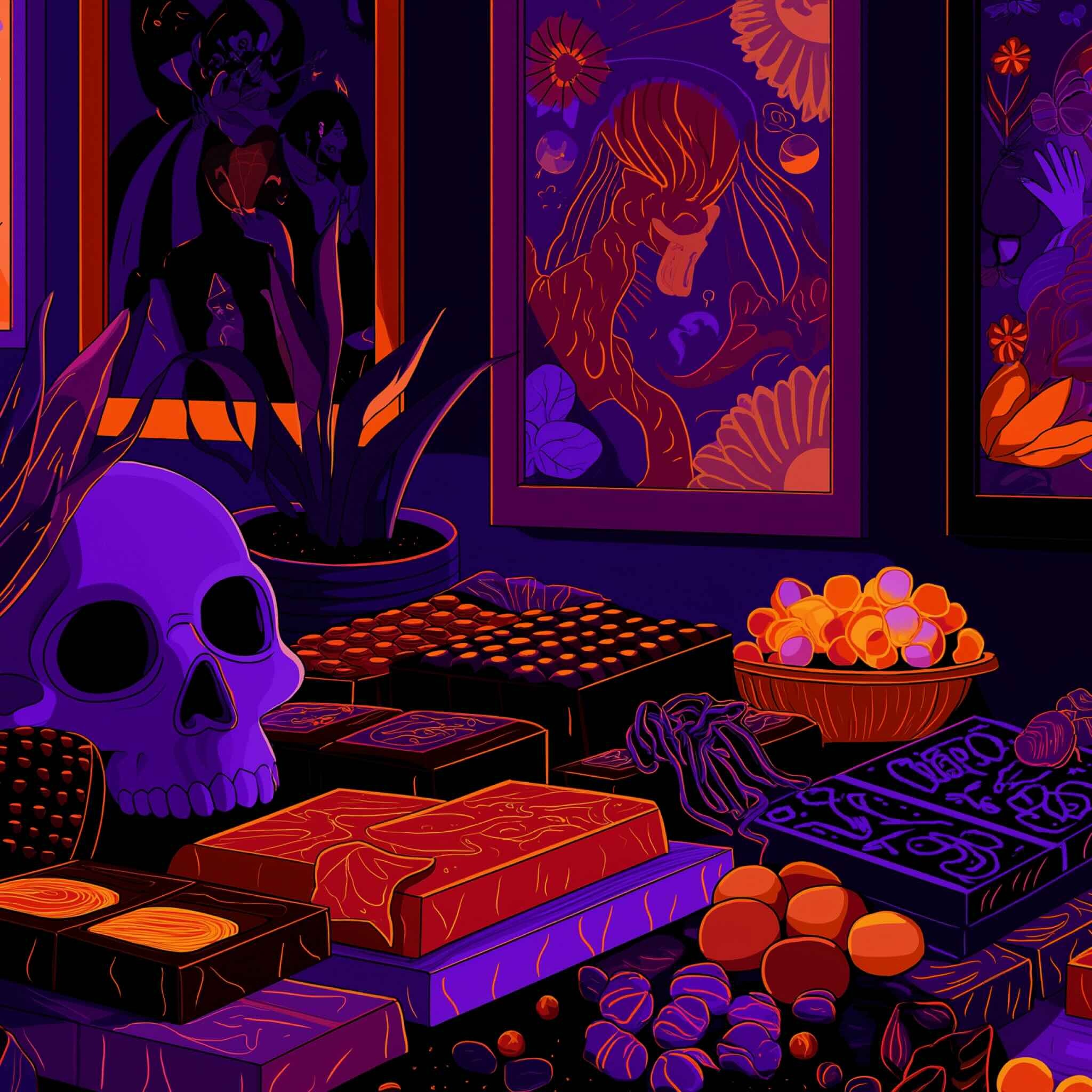
Each October, a macabre mood takes over the marketing world, and audiences are treated to a parade of creepy candy ads. Some you’ll quickly forget. Others may haunt you...forever.
This year, adtech platform SmartAssets and market research tool QuestDIY paired up to tap into the consumer mindset, measure Halloween hype, and find out which type of ad content is working (and which is best left buried 6 feet under).
Our survey data found that ads do indeed matter when it comes to candy purchasing habits. 45% of QuestDIY respondents said they “sometimes” buy candy after having watched a Halloween ad; 20% confirm that they “often” purchase candy as a result; and 9% confess that they “always” try a product after watching the ad. (They're either watching very little advertising, or eating a lot of candy.)
Below, we’ll bite into America’s most-loved candy brands, with a focus on brand recall and the effectiveness of seasonal advertising gimmicks. Let’s take a slightly haunted look at boo-tiful data behind 2025’s #candyzeitgeist. No jump scares, we promise.
Our QuestDIY survey looked at who is, and isn’t, taking part in various aspects of Halloween. In spite of the non-participants, the total addressable market for Halloween sweets is huge. Consider that most consumers will be decorating their home or yard (51%), watching Halloween movie specials (53%), or buying candy for trick-or-treaters (57%).
That’s 197 million potential candy shoppers. But what type of sweets are they snagging this spooky season?
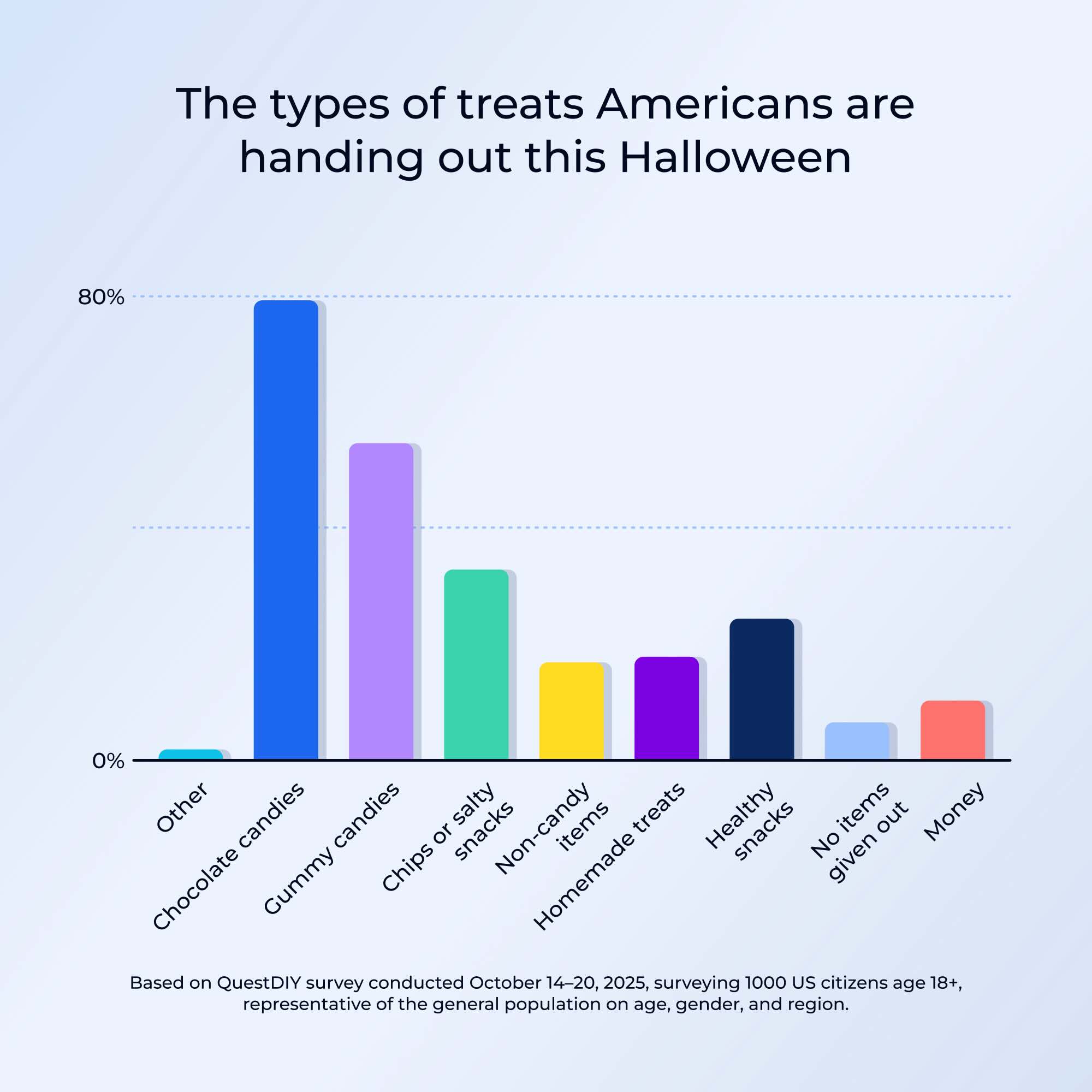
We have an idea of the types of candy that are the most popular in the lead-up to Halloween—but are consumers stocking up for visitors, or to satisfy their own cravings?
Interestingly, there's a split here. 42% of Americans will be buying candy for themselves as well as Halloween door-knockers. But there’s a nearly break-even split between those who only buy candy for trick-or-treaters (28%), and those who only buy for themselves (27%).
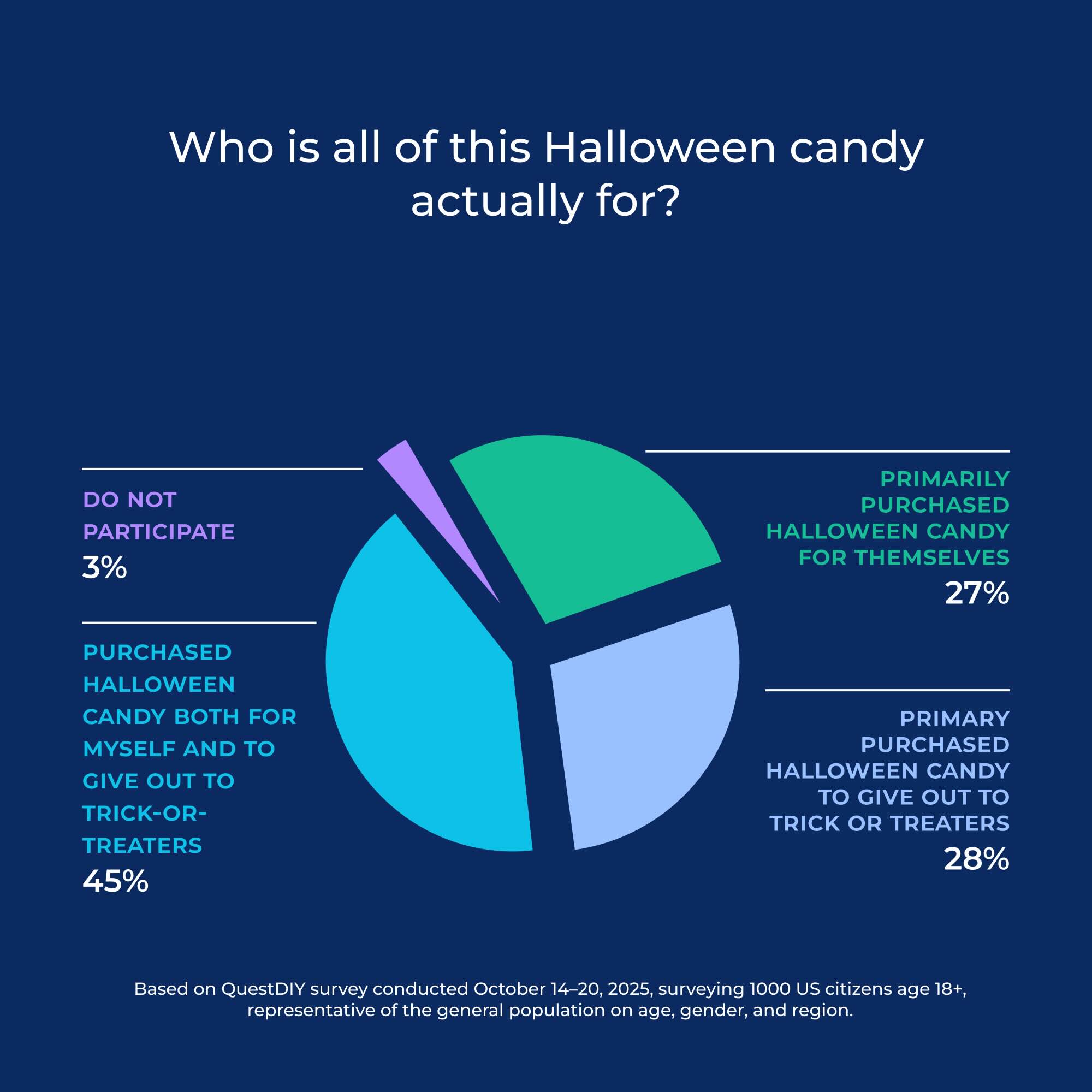
This raises a pertinent question for advertisers: How should you be positioning your advertising when roughly half of your consumers are the ones actually consuming your product?
And with this in mind, what exactly does this audience like to see in their ads?
It’s no secret that American consumers love ads that play into Halloween tropes. As such, it makes perfect sense that these ads tend to be formulaic.
The SmartAssets team created a list of custom rules that were used to analyze our set of ads, checking for things like Halloween-style color palette, the presence of ghouls and ghosts, wordplay, specific sounds, and more.
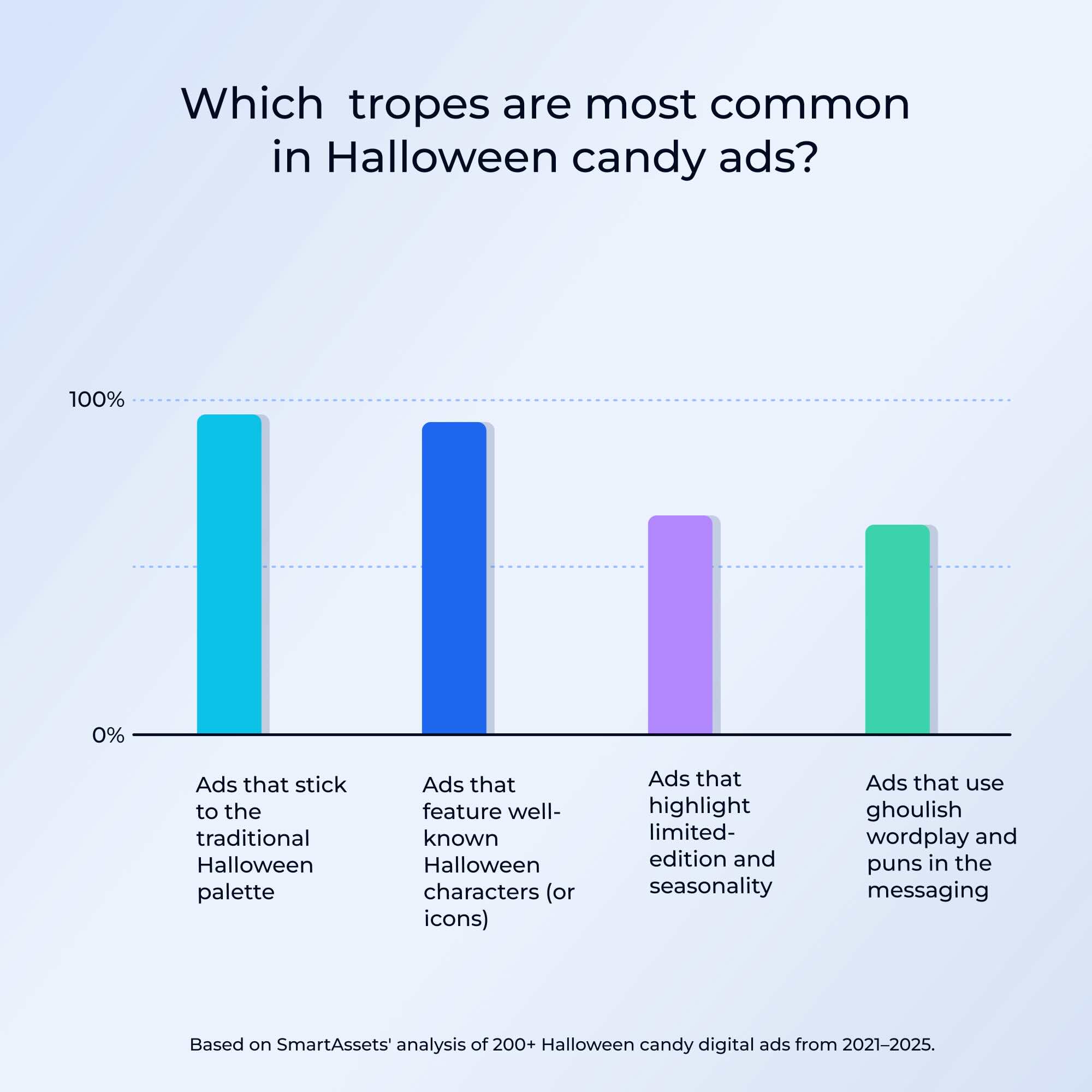
Halloween marketers are clearly working within an “if it ain’t broke, don’t fix it” mindset.
But SmartAssets found that only 25% of ads evoked humor—a key factor for competitive edge and memorability.
Turning to our QuestDIY survey data, consumers have a stark opinion on what makes a good Halloween advertisement.
Respondents cite "spooky or playful themes" (60%), "clear connection to Halloween traditions like witches, gourds, ghosts" (45%), and "engaging storytelling or humor" (44%). Factors like interactive elements/contests (15%) are much less important. or celebrity endorsements (14%) are relatively unimportant to a respondent's idea of ad success.

The data shows that you don’t need a costly celebrity cameo to produce the best Halloween ad, because only a slim 14% of the audience cares about a recognizable face in this context. (Less than 1% of the ads analyzed by SmartAssets featured a celebrity.) That's good news for your seasonal budget, since you won't need to shell out for Channing Tatum to hawk your new flavor of Sour Patch Kids.
The takeaway is clear: Lean into fright, amp up the humor, and don’t be afraid of the cliche tropes of spooky season (witches never go out of style). SmartAssets also found that Halloween ads which highlight seasonal offers, include a revised price, and mention “taste” specifically have higher impact. And an emphasis on sensory cues (gooey, crunchy, chewy, etc.) are also a good way to increase engagement.
One sweet treat in particular is making a big impact in Halloween advertising: Snicker's. According to our QuestDIY survey data, 44% of the population remember at least one ad by the hunger-crushing candy brand.
QuestDIY’s data showed that the candies whose ads rank highest for memorability, after Snickers at #1, are M&Ms, Hershey's, Skittles, and Milky Way.
An interesting aside here: Following the growth of social advertising over the last decade, many brands have also chosen to tap into collaborative advertising. This has led to “better together” campaigns, like this one from the Hershey Company that did double duty for Reese’s and Kit Kat.
Ad recall is one thing, but does it translate into purchasing power? We asked ourQuestDIY audience which candies they will actually be stocking up on this year. The resulting top 5 selections, drumroll please:
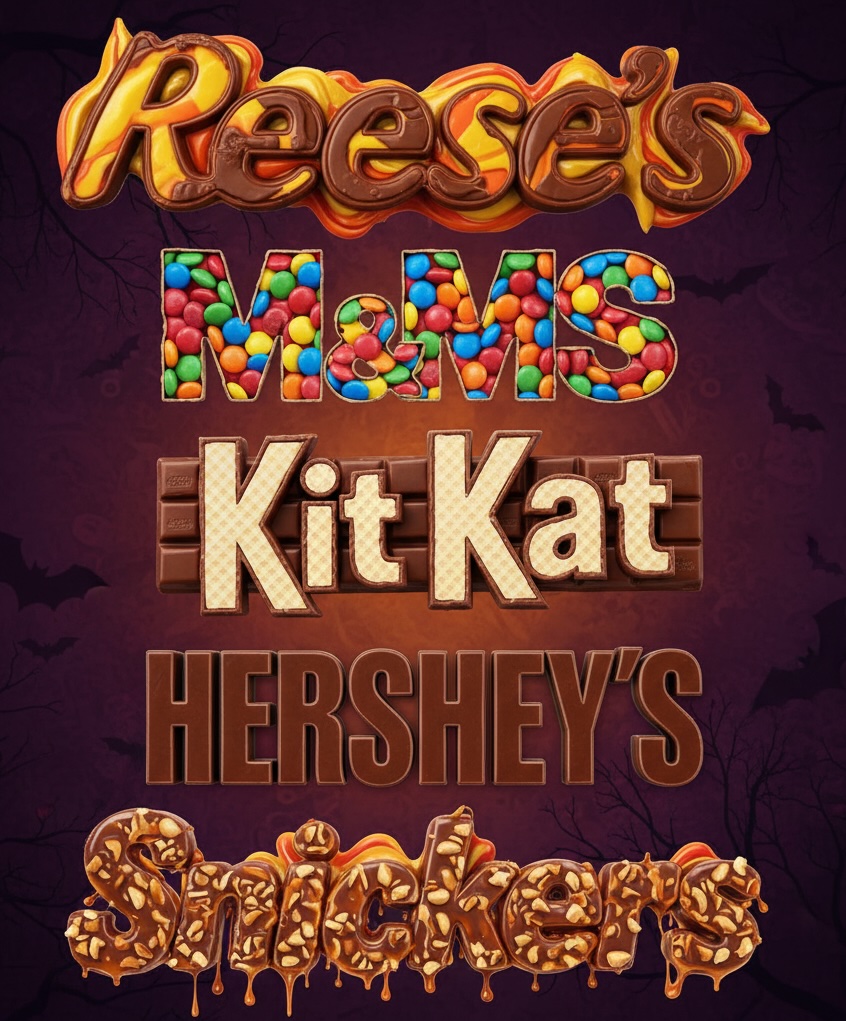
RIP to boring advertising. RIP to celebrity Halloween cameos. RIP to contests.
What truly makes the champions of the candy season is: brand recognition, flavor twists, advertising patterns, cheesy puns, packaging innovation, and many Halloween gimmicks.
"Half the money I spend on advertising is wasted; the trouble is I don't know which half," once said 20th-century American merchant John Wanaker. But a lot has changed since then.
Not only can we attribute campaigns success more effectively, we can roll out surveys in minutes with QuestDIY—check out our deep dive into the popularity of Pumpkin Spice—and even analyze the impact of creative features with creative effectiveness tools such as SmartAssets.
SmartAssets is an adtech tool that identifies and predicts what exactly about creative content drives advertising effectiveness. This enables brand, media, and creative teams to cut production and media waste, while driving up ROAS.
For example, when our team analyzed 200+ Halloween candy ads and UGC across multiple advertising platforms for this article—including Instagram, Snapchat, Facebook and YouTube—SmartAssets was able to provide instant feedback on content that fell short on brand, platform, and advertising best practices.
You might be surprised to know that 53% of all analyzed assets fell short on some aspect of advertising best practices, whether that was font size, call-to-action clarity, mobile readiness, average frame length, and many more factors that could have led to pre-flight edits.
We’d love to show you how both tools can help you understand your consumers, and create better ads. Book a free product demo today to find out more—we don't bite 🧛.